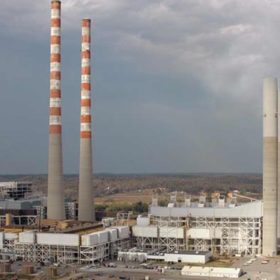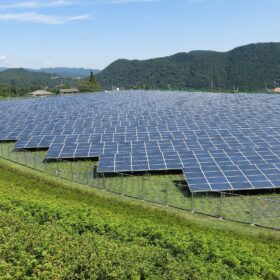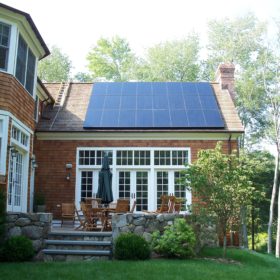While U.S. Energy Secretary Rick Perry peddles energy myths conflating baseload power with reliability, the state that he formerly governed is moving in a very different direction.
Texas grid operator ERCOT has released two reports looking at meeting peak demand this summer and in the coming years, which show that solar and wind are beginning to make a contribution to meeting peak demand as older fossil fuel plants are mothballed.
The contributions are still small, but solar in particular is expected to play a growing role in meeting Texas’ high summer peak demand, which is driven by widespread use of air conditioning to make the state’s intense summer heat tolerable.
Texas hit a peak demand record last August of over 71 GW, but ERCOT is giving itself room to hit 73 GW this summer. And as it does, the state is adding new solar, wind and gas plants to meet that need.
ERCOT puts the current installed capacity of utility-scale solar in the state at 873 MW, and rates such projects at 77%, meaning that of this 73 GW, the solar projects are expected to meet 603 MW. This is likely in part because summer peak demand tends to fall in the afternoon, with last summer’s heat record coming in between 3 and 4 PM.
The organization expects another 208 MW of solar projects to come online by the summer, but is not counting on these in its reliability assessment. Texas also has 19 GW of wind power which supplied 18% of total ERCOT electric needs in 2015. To put this in context, this is a higher portion than Germany or most European nations. However, the organization is not counting on wind to meet much of summer peak.
ERCOT rates most wind at 14% of capacity for meeting summer peak demand, but wind near the Gulf of Mexico at 58%, due to the different daily timing of winds on the coast. However, Texas only has 2.1 GW of “coastal” wind projects.
All of this is happening as ERCOT is retiring coal and gas plants during a period of sustained low power prices. NRG CEO Mauricio Gutierrez complained of the difficulty operating in Texas during the company’s Q1 results call, due to a crowded queue of new wind, solar and gas projects and prices that are driving older plants offline.
ERCOT’s summer 2017 reliability report backs this up, with the organization listing 1.9 GW of older coal and nuclear plants – including some from the 1950s – as “mothballed”.
But contrary to the Trump Administration’s claim that grids need baseload coal and nuclear plants, this is not expected to impact reliability. ERCOT will run at a 19% reserve capacity this summer, and does not expect that margin to dip below 16% over the next few years.
Looking forward into next summer, solar will take on a bigger role. Looking only at utility-scale solar projects with signed interconnection agreements, ERCOT estimates that 879 MW of solar PV will come online in 2017, and 976 MW by the summer of 2018, and nearly all of these plants have been sited in West Texas. This would mean a contribution of 1.4 GW towards summer capacity needs at the 77% rate.
GTM Research notes that the barrier to obtaining an interconnection agreement in Texas is low, and that some of these projects will likely not make it. However as some fail, new ones are likely to be built, and the organization is forecasting similar capacities of 2017 utility-scale solar installations in Texas as ERCOT’s assessment.
“There are a lot of utility PV developers looking in Texas, some of whom have a lot of experience and others who are more novice,” GTM Research Solar Analyst Colin Smith told pv magazine. “I believe it will be a gold rush; lots of developers going looking for success but only a few players will strike big.”
And this is just the beginning. ERCOT has forecast that it will reach 13 GW of solar capacity by 2030, even without the Obama Administration’s Clean Power Plan. This would represent a more than 10-fold increase on Texas’ installed capacity at the end of 2016, and even this may be an overly conservative prediction.
This content is protected by copyright and may not be reused. If you want to cooperate with us and would like to reuse some of our content, please contact: editors@pv-magazine.com.








By submitting this form you agree to pv magazine using your data for the purposes of publishing your comment.
Your personal data will only be disclosed or otherwise transmitted to third parties for the purposes of spam filtering or if this is necessary for technical maintenance of the website. Any other transfer to third parties will not take place unless this is justified on the basis of applicable data protection regulations or if pv magazine is legally obliged to do so.
You may revoke this consent at any time with effect for the future, in which case your personal data will be deleted immediately. Otherwise, your data will be deleted if pv magazine has processed your request or the purpose of data storage is fulfilled.
Further information on data privacy can be found in our Data Protection Policy.